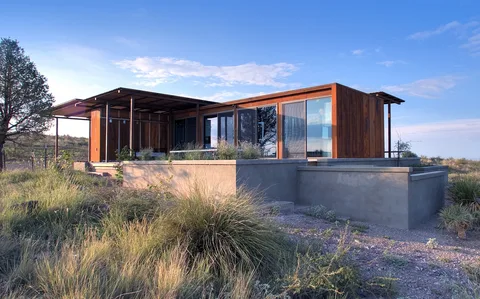The Future of Living: Exploring Prefab Modular Homes
Prefab modular homes, often referred to as modular homes, are a modern approach to home construction that has gained significant popularity in recent years. Unlike traditional homes built on-site, modular homes are constructed off-site in a factory setting and then transported in sections, or modules, to the final location where they are assembled. This method offers a level of precision and quality control that is difficult to achieve with conventional construction techniques. The concept of modular construction is not entirely new, but advancements in technology and design have transformed it into a viable and attractive option for many homebuyers.
One of the key benefits of prefab modular homes is their efficiency. The construction process is faster, often taking just a few months from start to finish, compared to the many months or even years required for traditional homes. This speed is due to the fact that construction can occur simultaneously with site preparation, reducing delays caused by weather or other on-site issues. Moreover, the controlled environment of a factory allows for more consistent quality, with less waste and fewer defects. These factors contribute to a lower overall cost, making modular homes an affordable option for many.
Customization and Flexibility in Design
One of the misconceptions about prefab modular homes is that they are limited in design and customization options. In reality, modern modular homes offer a wide range of design possibilities, allowing homeowners to create a space that reflects their personal style and needs. From contemporary minimalist designs to more traditional aesthetics, the options are virtually limitless. Builders and designers work closely with clients to customize everything from the floor plan to the finishes, ensuring that the final product meets their expectations.
The flexibility of modular construction also extends to the ability to easily expand or modify the home in the future. Since the home is built in sections, adding additional rooms or features is more straightforward than with traditional construction. This adaptability makes modular homes an excellent choice for those looking to invest in a home that can grow and change with their needs. Additionally, the modular nature of the construction allows for homes to be built in challenging locations, such as remote or difficult-to-access areas, where traditional construction would be more problematic.
Sustainability and Environmental Impact
Prefab modular homes are not only efficient and customizable, but they also offer significant environmental benefits. The construction process itself is more sustainable, with less waste generated compared to traditional building methods. Because the modules are built in a factory setting, materials can be ordered in bulk, reducing excess and allowing for more efficient use of resources. Furthermore, the controlled environment of the factory means that energy use is optimized, and the impact on the local environment at the building site is minimized.
In addition to the construction process, many modular homes are designed with sustainability in mind. Builders often incorporate energy-efficient features such as advanced insulation, energy-efficient windows, and renewable energy systems like solar panels. These features not only reduce the environmental impact of the home but also lower energy costs for homeowners. The use of sustainable materials, such as recycled or locally sourced materials, is also common in modular construction, further enhancing the environmental benefits of these homes.
The Growing Popularity of Modular Homes
As more people become aware of the benefits of prefab modular homes, their popularity continues to rise. This trend is particularly evident in areas with high housing demand and limited availability of traditional construction options. In urban areas, where space is at a premium, modular homes offer a practical solution to the challenges of building in densely populated environments. Their quick construction time and cost-effectiveness make them an attractive option for developers and homebuyers alike.
The appeal of modular homes is not limited to urban settings. In rural and remote areas, where traditional construction may be difficult or expensive, modular homes provide a viable alternative. They can be delivered to locations that are otherwise hard to reach, and their durability and quality make them suitable for a wide range of environments. Additionally, the ability to customize and expand modular homes makes them an appealing option for those looking for a long-term investment in their living space.
In conclusion, prefab modular homes represent a significant shift in the way we think about home construction. Their efficiency, customization options, sustainability, and growing popularity make them a compelling choice for modern homebuyers. As technology and design continue to evolve, it is likely that modular homes will become an even more prominent feature of the housing market, offering a versatile and forward-thinking solution to the challenges of modern living.

